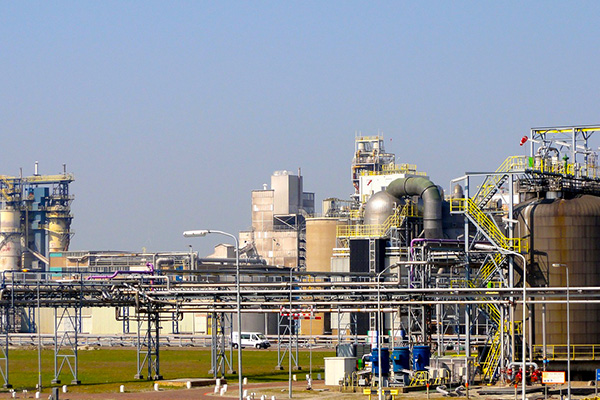Classification and application of chemical raw materials - from basics to in-depth analysis
In modern industry, chemical raw materials play a vital role. As the basis of chemical manufacturing, they are widely used in pharmaceuticals, agriculture, plastics, food and other fields. Chemical raw materials can be divided into many types according to their sources, production processes and application scenarios. This article will conduct in-depth analysis from basic classification to practical application to help you fully understand this industrial cornerstone.
I. Basic classification of chemical raw materials
Chemical raw materials are mainly divided into two categories according to their material sources: organic chemical raw materials and inorganic chemical raw materials.
1. Organic chemical raw materials
Carbon-containing compounds are the core characteristics, with complex molecular structures and a wide range of applications. Common types include:
Alkanes and their derivatives (such as methane and ethane): used for fuels and chemical synthesis.
Olefins and their derivatives (such as ethylene and propylene): raw materials for plastics and synthetic rubber.
Aldehydes, alcohols, ketones: used for solvents, fragrances and pharmaceutical intermediates.
Phenols, ethers: catalysts or solvents in chemical reactions.
Organic acids and carbohydrates (such as acetic acid and glucose): key ingredients in the food and pharmaceutical industries.
Application characteristics: Covering almost all chemical fields, it is the cornerstone of high-end materials and fine chemicals.

2. Inorganic chemical raw materials
Chemical substances that do not contain carbon are mostly derived from minerals, air or water. Typical types include:
Minerals such as sulfur, sodium, phosphorus, potassium, and calcium: the basis for the production of industrial products such as fertilizers and detergents.
Coal, oil, and natural gas: both energy and important raw materials for the chemical industry.
Waste gas and wastewater (such as sulfur dioxide and coke oven gas): can be converted into valuable products such as ammonium sulfate after recycling.
Application trend: Expanding from traditional industries to environmental protection technologies, promoting the development of green chemistry.

II. Classification based on production processes
According to the role of the production process, chemical raw materials can be divided into starting raw materials, basic raw materials, and intermediate raw materials.
1. Starting raw materials
The "starting point" of chemical production is mostly natural resources:
Air, water, and fossil fuels: necessities for chemical reactions.
Minerals and agricultural products (such as sea salt and wood): provide natural sources of organic/inorganic components.
2. Basic raw materials
The products of the initial processing of the starting raw materials support the subsequent production:
Calcium carbide, sodium chloride: used to synthesize organic chemicals, polymers and fertilizers.
Petroleum refining products (such as ethylene, propylene): core raw materials for plastics and synthetic fibers.
3. Intermediate raw materials (intermediates)
"Transition products" in the production chain need to be further processed into end products:
Methanol, acetone, vinyl chloride: used for intermediate reactions in dyes, plastics, pharmaceuticals and other fields.

III. Core application areas of chemical raw materials
1. Pharmaceutical industry
Organic intermediates (such as vinyl chloride, aldehydes) are the key to drug synthesis and support the research and development of antibiotics, vaccines, etc.
2. Agricultural field
Inorganic raw materials (potassium phosphate, nitrogen fertilizer) combined with organic pesticides promote soil improvement and crop yield increase.
3. Plastics and synthetic fibers
Petroleum-based olefins (ethylene, benzene) are important sources of materials for packaging, construction, textiles and other industries.
4. Food industry
Organic acids (such as acetic acid) and carbohydrates (such as lactose) are widely used in food additives and processing.

IV. Future Trends: Green Chemistry and Sustainable Development
Driven by global environmental protection needs, the chemical raw materials industry is accelerating its transformation:
Green process: reduce pollution emissions and develop low-carbon production technology.
Resource cycle: efficient recycling of waste gas and wastewater (such as CO₂ to methanol).
Bio-based raw materials: replace fossil resources with renewable biomass (such as biodegradable plastics).
Smart materials: the rise of innovative applications such as nanomaterials and functional polymers.
Conclusion
Chemical raw materials are the "invisible promoter" of industrial civilization, and their classification and application run through every link of modern production. From basic minerals to complex organic molecules, from traditional industries to green technology, this field continues to promote technological progress and sustainable development of human society. In the future, with the integration of biotechnology and intelligent manufacturing, the potential of chemical raw materials will be even more far-reaching.


 EN
EN
 AR
AR
 BG
BG
 HR
HR
 CS
CS
 DA
DA
 NL
NL
 FI
FI
 FR
FR
 DE
DE
 EL
EL
 HI
HI
 IT
IT
 JA
JA
 KO
KO
 NO
NO
 PL
PL
 PT
PT
 RO
RO
 RU
RU
 ES
ES
 SV
SV
 TL
TL
 IW
IW
 ID
ID
 LV
LV
 LT
LT
 SR
SR
 SK
SK
 VI
VI
 HU
HU
 TH
TH
 TR
TR
 GA
GA
 CY
CY
 KA
KA
 LA
LA
 MN
MN
 KK
KK
 LB
LB

